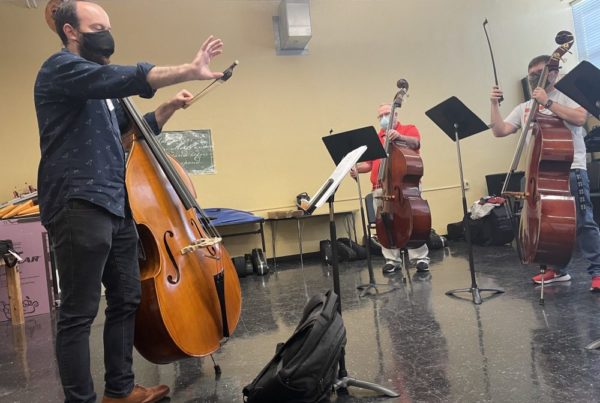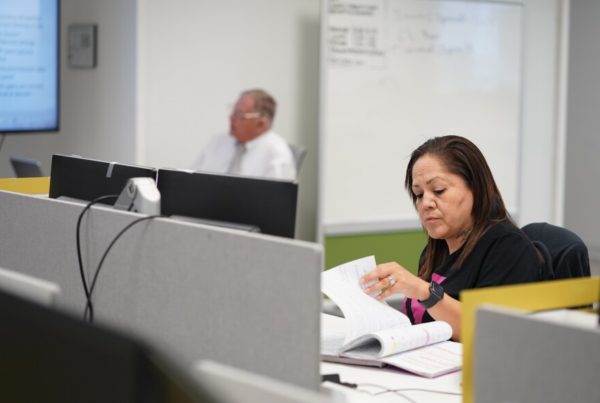Texas’ share of the Infrastructure Investment and Jobs Act includes billions of dollars for rebuilding the state’s roads and bridges. And the improvements will focus on bolstering resilience to the effects of climate change.
Ali Mostafavi, an associate professor of civil and environmental engineering and the director of the Urban Resilience Lab at Texas A&M University, spoke to Texas Standard about what the bill means for the future of the state’s roadways. Listen to the interview above or read the transcript below.
This transcript has been edited lightly for clarity:
Texas Standard: What does it mean to have a resilient infrastructure and how is that connected to climate change mitigation?
Ali Mostafavi: When we talk about the infrastructure of resilience, we mean the physical infrastructure systems – such as roads, bridges, power grids – being able to withstand extreme weather hazards and adapt and restore services in the case of disruptions. So essentially, what we mean is for those systems to maintain functionality for residents and provide services. And if they experience service disruption such as power outage, they can be recovered quickly.
When we talk about climate mitigation, we are talking about reducing the emission of greenhouse gases. That could exacerbate the effect extreme weather has on our infrastructure. But when we talk about infrastructure resilience in particular, we are talking about the ability of systems to withstand the impacts of those extreme weather hazards.
We’re learning so much about climate change and the effects on Texas. What do we know? What specific needs does Texas have around resilience? When I think of climate change, I think of hurricanes, the winter storm earlier this year. Give us a sense of what that means. Where’s our infrastructure most vulnerable right now?
I think the recent events we all experienced over the past few years are very good examples of what we are going to see and what the needs are. So we can look at Hurricane Harvey and the amount of rain it brought in, the amount of time that we experienced a downpour that stressed our coastal infrastructure, our flood control infrastructure in affected areas. So we have needs improving infrastructure resilience for our coastal and flood control infrastructure.
When we look at transportation infrastructure, recent events – Superstorm Imelda is a good example of that. The mount of rain caused severe street flooding because the drainage capacity of the roads was not adequate to absorb that amount of rain in a short period of time.
Another example, as you mentioned, is our winter storm earlier this year that stressed our power infrastructure and the outages that we experienced, which is another example of the weather hazards that affect our power grids and why it should be resilient for future events. And as you mentioned, the impact of climate change on weather hazards manifest itself in various ways in Texas.
One of them is that we see more extreme weather: both extreme heat and extreme cold. We see more accelerating hurricanes that leave residents with less time to prepare. We’ve seen heavier precipitation, such as the case that we had in Imelda and Harvey. So all of these events are examples of how our infrastructure fell down, where we need to invest for resiliency.
So you’re talking about, say, better drainage for highways and roads. We’re talking about, for instance, weatherization that is now being done. What else are we looking at?
Take the example of flooding. We need to identify the most vulnerable flood control infrastructure – like what we experienced with the Addicks and Barker Reservoir in West Houston during Hurricane Harvey. And before another event happens to retrofit them, improve them. Or, if they need additional reservoirs, based on comprehensive studies, we need to make investments.
We need to increase the capacity of our flood control systems and add local retention and invest in our green infrastructure. For roads and bridges, there are several bridges in floodplains that have severe air scouring. [We should be] Identifying those and repairing those scours that we know may get worse, and because failure is during flood and heavy rain events. It is one of the priorities, and the same applies for other infrastructure such as the power grid.















